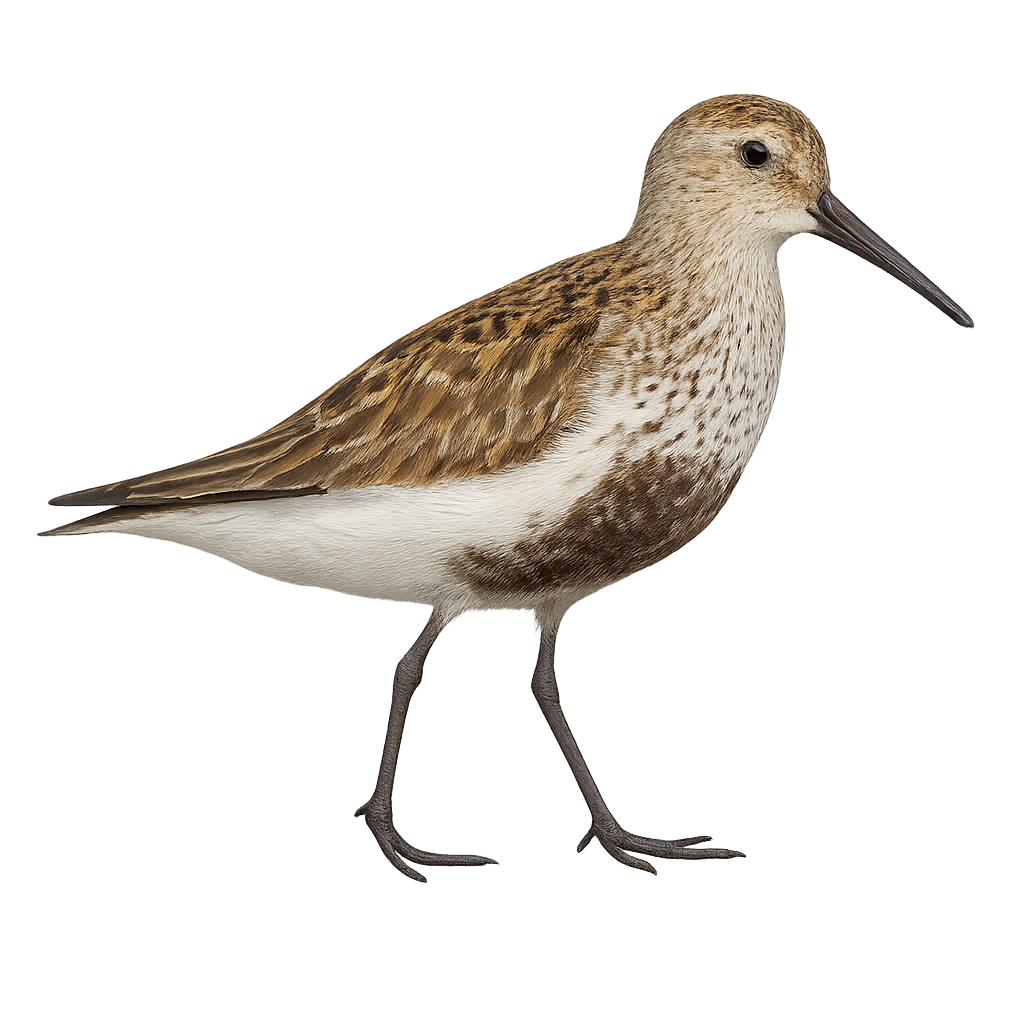Observe and photograph a species in its natural habitat
Learn where and when to observe a species in the wild, how to recognize it in the field, and what habitats it lives in. Get photography tips adapted to its behavior and capture stunning images without disturbing the animal. For full details, open the complete profile in the WildlifePhotographer app.
Dunlin
Scientific name: Calidris alpina

IUCN Status: Least Concern
Family: SCOLOPACIDAE
Group: Birds
Shyness: Suspicious
Safe distance: 30 m
Breeding season / Courtship: 01.04-31.05
Gestation: N/A
Births: 01.06-31.07
Habitat:
Wetlands, sandy beaches, estuaries, lagoon shores, and coastal marshes of Asia, Europe, and the Americas, often observed during migrations
Description:
The Dunlin is a small, graceful wader, easily recognizable by its plumage that changes with the seasons, transitioning from gray-brown in winter to more contrasting black and white tones during breeding. This small bird primarily inhabits coastal areas of Europe, Asia, and North America, where it feeds on marine invertebrates, primarily worms and mollusks, which it finds by probing the sand and mud. The Dunlin exhibits social behavior and is often seen in groups, especially during migration.
This migratory wader covers long distances, leaving the cold regions of winter to reach more temperate or tropical areas for feeding and breeding. While relatively common, it can be affected by the disturbance of its coastal habitats.
Recommended lens:
>=400 mm
Photography tips:
Use a telephoto lens to photograph the dunlin, especially when it is feeding on beaches or estuary shores. The soft light of the morning or evening is ideal to capture its quick movements and beautiful colors. Be discreet and respect their space to avoid disturbing their natural behavior, especially during the breeding season.
Ready to take action?
Choose your platform and start your free trial today



